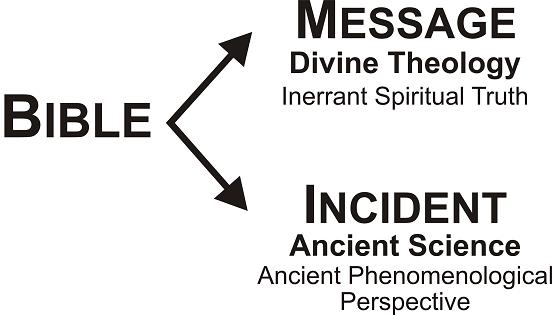
As I argued in a previous contribution, the Bible presents a 3-tiered universe. One of the most important passages in the New Testament is the Kenotic Hymn, and it employs this view of the structure of the cosmos. Highlighting the fact that God emptied (Greek keno?: to empty, pour out) Himself and came down to the level of humans in the person of Jesus, the apostle Paul writes:
Your attitude should be the same as that of Christ Jesus: Who, being in very nature God, did not consider equality with God something to be grasped, but made Himself nothing, taking the very nature of a servant, being made in human likeness. And being found in appearance as a man, He humbled Himself and became obedient to death–even death on a cross! Therefore God exalted him to the highest place and gave him the name that is above every name, that at the name of Jesus every knee should bow, [1] in heaven and [2] on earth and [3] under the earth, and every tongue confess that Jesus Christ is Lord, to the glory of God the Father. – Phil 2:5-11 (NIV)
Ancient peoples understood the universe to be made up of three physical levels. Regrettably, English Bibles do not translate fully the original Greek. “Under the earth” should be rendered “the underworld.” In fact, the Greek word katachthoni?n in this verse refers to the beings down (kata) in the chthonic (chthovios) or subterranean world. A more accurate and literal translation of this verse is this: At the name of Jesus every knee should bow–of the beings in heaven, of the beings on earth, and of the beings in the underworld (cf., Matt 12:40; Eph 4:9-10; 1 Pet 3:19). For the biblical writers, the underworld was every bit as real as the heavens above their head and the earth upon which they walked.
So how should modern Bible-believing Christians interpret Phil 2? When Paul wrote this passage he understood the structure of the universe from an ancient phenomenological perspective (in contrast to our modern phenomenological perspective). Viewing the natural world with unaided physical senses, most people at that time accepted that the cosmos was literally made up of three tiers. In other words, this apostle, under the inspiration of the Holy Spirit, employed the science of his generation in order to declare the Messages of Faith that God took on human flesh in the person of Jesus to become a servant, and that the Father made Him Lord over the entire creation. Paul’s intention in this passage is not to inform Christians of the structure of the cosmos. It just happens to be that when he wrote this letter to the Philippian church, the 3-tier universe was his understanding of the construction of the world and that of his readers. In this way, ancient science assists to deliver the Divine Theology in Scripture.
The diagram above presents the Message-Incident Principle for the interpretation of biblical passages that refer to the physical world. This approach contends that in order to reveal inerrant spiritual truths as effectively as possible to ancient peoples, the Holy Spirit used their ancient phenomenological perspective of nature. That is, instead of confusing or distracting the biblical writers and their readers with modern scientific concepts, God descended to their level and employed the science-of-the-day. Similar to the central message in the Kenotic Hymn, the Creator humbled Himself through the use of ancient human ideas about nature in the revelatory process. Therefore, passages in the Bible referring to the physical world feature both a Message of Faith and an incidental ancient science. According to this interpretive principle, biblical inerrancy rests in the Divine Theology, and not in statements referring to nature. Qualifying ancient science as “incidental” does not imply that it is unimportant. The science in Scripture is vital for transporting the inerrant spiritual truths. It acts as a vessel similar to a cup that delivers “living waters” (John 4:10). However, the word “incidental” carries meanings of “that which happens to be alongside” and “happening in connection with something more important.” In the case of Phil 2, the 3-tier ancient astronomy is “alongside” the “more important” Message of Faith that Jesus is Lord over the entire universe. Amen!
For more on the Message-Incident Principle see Denis O. Lamoureux’s book I Love Jesus & I Accept Evolution (2009), pages 44-50 and his website.

